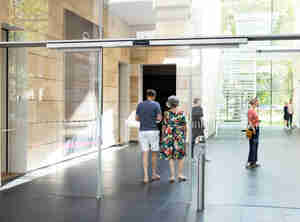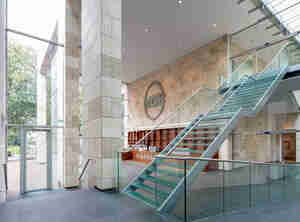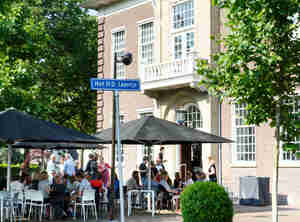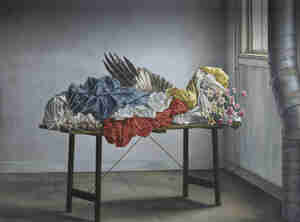- Plan your visit
- See and do
- Collection
- About us

Go back
Carel Willink
Mountain Landscape, 1938
From the mid-1930s onwards, Carel Willink (1900-1983) encapsulated his search for immortality in a series of heroic, ‘timeless’ landscapes. These works focus on the beauty of unspoilt nature, in which humans play a subordinate role. Placed within the ostensibly classical compositions, the dead trees
...
and branches – symbolic of mortality – bring contrast to the landscapes. Moving towards World War II, Willink’s overcast skies became increasingly menacing; the fearful spirit of the times is tangible, although the artist himself always denied the apparent link.
Mountain Landscape is one of the works that combines a landscape and a bleak, overcast sky. The lack of statues, ruins, exotic animals or futuristic elements makes this work somewhat atypical compared to many of his other works. We only see some trees, a view with a solitary tower on a mountain in the background and the characteristic dark, overcast sky. And a dead tree.
Artist
Carel Willink
Title
Mountain Landscape
Year
1938
Technique
Oil on canvas
Size
64 x 88 cm (h x w)
Type of object
Painting
Copyright
© Pictoright/Sylvia Willink
This work is protected by copyright. You need permission from the creator or his heir to download, edit, copy or publish it.










